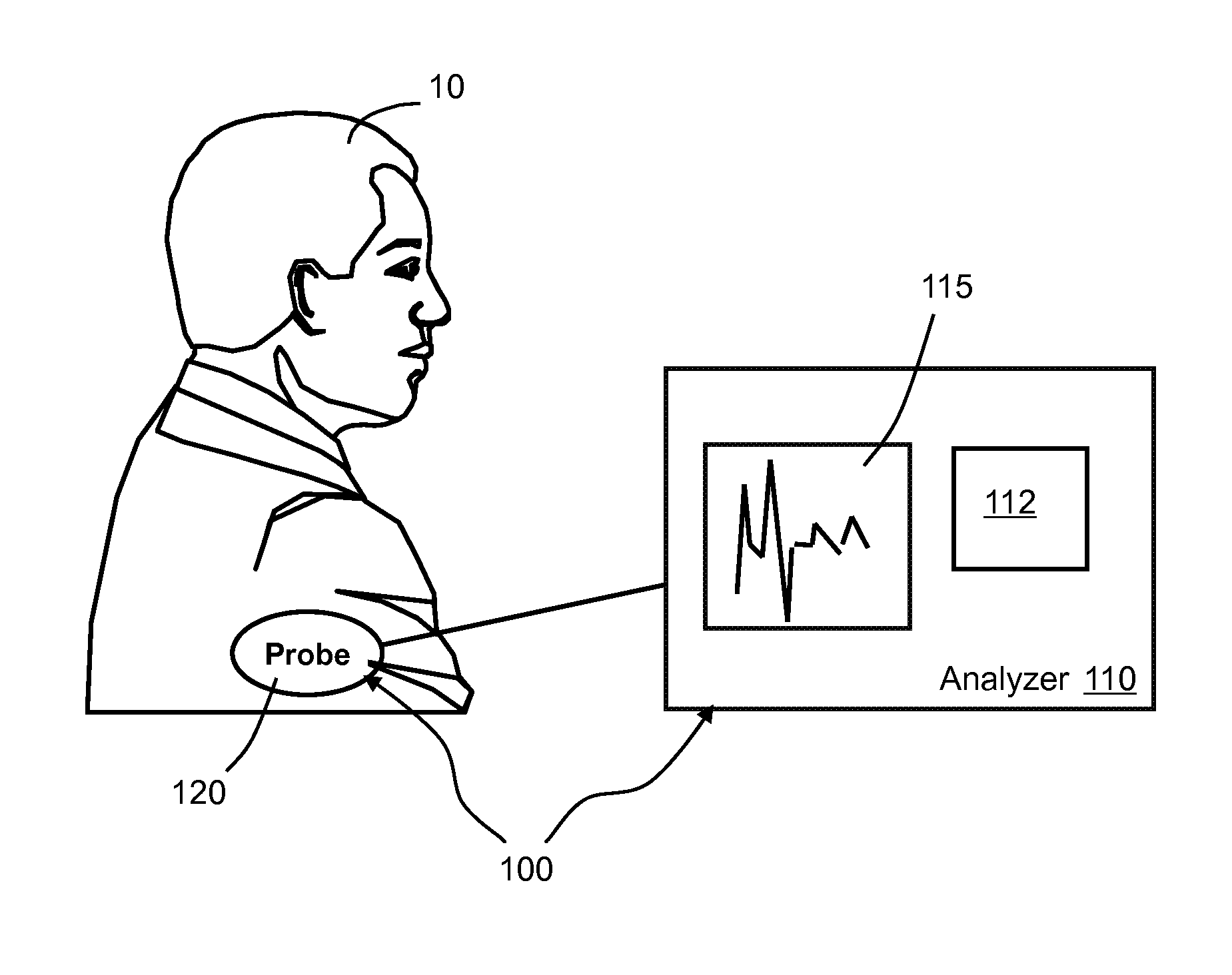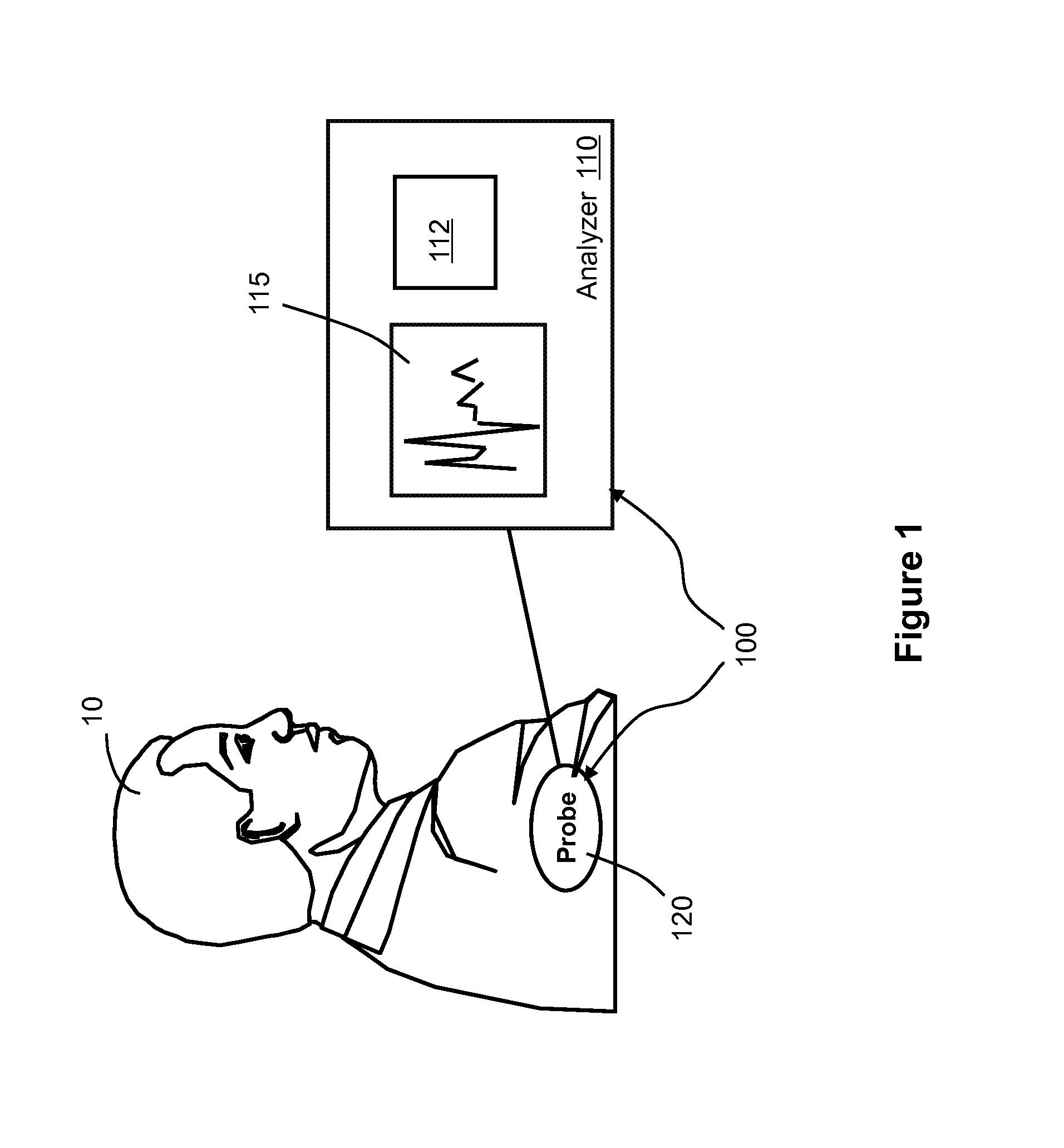System and method for improved complex fractionated electrogram ablation
a technology of complex fractions and electrograms, applied in the field of system and method for improving complex fractions electrogram ablation, can solve the problems of difficult identification of critical atrial substrates, achieve accurate analysis of atrial fibrillation signals, enhance the efficacy of catheter ablation, and improve the effect of catheter ablation. effect and long-term outcom
- Summary
- Abstract
- Description
- Claims
- Application Information
AI Technical Summary
Benefits of technology
Problems solved by technology
Method used
Image
Examples
Embodiment Construction
[0030]Referring to FIG. 1, an AF evaluation system 100 includes an analyzer 110 and a probe 120 that can be attached to a patient 10. The probe 120 can include a sensor, a transducer, or an electrode configured to measure intracardiac AF signals from the patient 10. The probe 120 can send the AF signals to the analyzer 110, often in analog form. The analyzer 110 can include an analog-to-digital (A / D) converter for digitizing the AF signals. The analyzer 110 also includes a computer processor 112 that is configured to process and analyze the AF signals after the AF signals are digitized by the A / D converter. A pre-stored algorithm in the analyzer 110 can rapidly analyze the AF signals, and provide guidance to defibrillation treatments, as described in more detail below. The analyzer 110 can also include necessary input / output devices, and a display 115 for displaying the AF signals and the results of the analysis of the AF signals.
[0031]In some embodiments, referring to FIG. 2, a pro...
PUM
 Login to View More
Login to View More Abstract
Description
Claims
Application Information
 Login to View More
Login to View More - R&D
- Intellectual Property
- Life Sciences
- Materials
- Tech Scout
- Unparalleled Data Quality
- Higher Quality Content
- 60% Fewer Hallucinations
Browse by: Latest US Patents, China's latest patents, Technical Efficacy Thesaurus, Application Domain, Technology Topic, Popular Technical Reports.
© 2025 PatSnap. All rights reserved.Legal|Privacy policy|Modern Slavery Act Transparency Statement|Sitemap|About US| Contact US: help@patsnap.com



